Tibet (Xizang), the Roof of the World, remained unknown to the world until the beginning of the 20th century. The massive, snowy land has exerted an awesome draw on travelers and adventurers ever since. Its majestic scenery, mysterious and exotic religious culture, and wonderful people, reward every tourist with an indelible life long memory!
Tibet (Tibet Autonomous Region, TAR for short) borders Xinjiang, Qinghai, Sichuan and Yunnan internally while India, Burma, Bhutan, Sikkim, and Nepal meet its external borders. It covers a massive 1,220,000 square kilometers (470,920 square miles), which is about 12.8 % of the whole of China. With an average height of 4,000 meters above sea level, Tibet is encompassed by some of the world's highest mountains. The Himalayas to the south, the Karakoram to the west, and the Kunlun to the north are the dream lands of all adventurers and mountaineers.
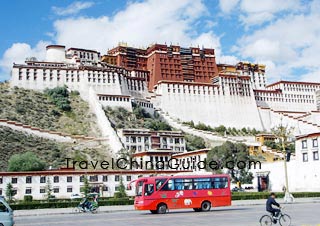 The vast land is also the cradle of several great rivers such as the Yangtze River, the Yellow River, the Nu River (Salween), the Lancang River (Mekong), the Yarlong Tsangpo (Brahmaputra), the Indus, and the Ganges. Tibet also offers awe-inspiring scenery of beautiful lakes and valleys. Over 1,500 lakes including Heavenly Lake Namtso and the holy Lake Manasarova make Tibet the plateau with largest amount of lakes. Without irrigation and nurturance of these rivers and lakes, the surrounding lands may not flourish.
The vast land is also the cradle of several great rivers such as the Yangtze River, the Yellow River, the Nu River (Salween), the Lancang River (Mekong), the Yarlong Tsangpo (Brahmaputra), the Indus, and the Ganges. Tibet also offers awe-inspiring scenery of beautiful lakes and valleys. Over 1,500 lakes including Heavenly Lake Namtso and the holy Lake Manasarova make Tibet the plateau with largest amount of lakes. Without irrigation and nurturance of these rivers and lakes, the surrounding lands may not flourish.
The long history and exotic religion allures more and more tourists every year. Tibetan Buddhism inhabits most Tibetans' hearts. Thus, a great deal of splendid monasteries, vivid murals and sculptures, and solemn stupas were built to worship the unparalleled Buddha. Lhasa and Shigatse, the most important cities of Tibet, feature most of the religious monuments including the Potala Palace, Jokhang Temple, Drepung Monastery, Sera Monastery, Ramoche Monastery, Tashilunpo Monastery and Sakya Monastery. Besides the monasteries, sacred mountains and holy lakes are also great places to show the Tibetan peoples' devotion to Buddha.
Western Tibet, Ngari, is a vast barren plateau and renowned as the Roof of Tibet. As the place where the Holy Lake (Lake Manasarova) joins the Sacred Mountain (Mt.Kailash), Ngari is a holy pilgrimage destination of both Tibetans and Hindus, as well as a popular challenge to trekkers. The ancient Shang Shung Kingdom and Guge Kingdom also exert a pull. As the climate is so inclement few people live in this region. Therefore, Ngari is also the home of wild yak, Tibetan antelope, wild donkey, and many other rare wild animals.
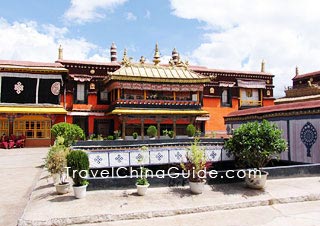 In Tibet, five mountains exceed the altitudes of 8,000 meters (26,240 feet) and many of the mountains exceed the altitudes of 7,000 meters (22,960 feet). Hence, southwestern Tibet has been a popular destination for mountaineers. Mt. Everest towers over the region. Besides, more than 40 snow capped peaks are open to mountain climbing enthusiasts. Each year, thousands of adventurers and mountaineers come to Tibet to challenge both nature and themselves. Southern Tibet also offers primeval forests, running waters, and a relatively mild climate. Yarlong Tsangpo Canyon, the largest canyon in the world, is the home of rare plants and animals, and remains unknown to anyone other than the local people.
In Tibet, five mountains exceed the altitudes of 8,000 meters (26,240 feet) and many of the mountains exceed the altitudes of 7,000 meters (22,960 feet). Hence, southwestern Tibet has been a popular destination for mountaineers. Mt. Everest towers over the region. Besides, more than 40 snow capped peaks are open to mountain climbing enthusiasts. Each year, thousands of adventurers and mountaineers come to Tibet to challenge both nature and themselves. Southern Tibet also offers primeval forests, running waters, and a relatively mild climate. Yarlong Tsangpo Canyon, the largest canyon in the world, is the home of rare plants and animals, and remains unknown to anyone other than the local people.
Tibetan people are warm and hospitable. Tourists can visit local families and experience the daily life of Tibetan people. Holidays and festivals are the most important days in Tibet. Enjoying the local food and dancing with beautiful Tibetan girls are the most excellent ways to celebrate these joyful times. Buying some typical handicrafts in Barkhor Street or from other authentic vendors may add extra happiness to your visit.
Beside white snow capped mountains, verdant virgin forests, clean running rivers and tranquil beautiful lakes, the devotional pilgrim progress toward their places of worship by prostrating themselves under the sky and along the roads, making people humble and modest. Tibet, the lost paradise under the sky, is undoubtedly a place where the spirit lives!
The already famous Tibet Railway that was completed last October has been officially set for operation from July 1, 2006. This miraculous engineering achievement will make Tibet, the mysterious and amazing sacred land with a thousand-year history, witness many changes leading to prosperity.
Following the opening of the Tibet Railway, 3,000 - 4,000 tourists are expected to travel to Tibet every day. It is anticipated that the railway will enhance tourism to both Qinghai Province as well as the Tibet Autonomous Region, thus bringing prosperity to that part of West China that until now has not enjoyed all the benefits attributable to the tourist industry. The new rail link provides the traveler with a more convenient, comfortable, safer and economical way to go to Tibet. In turn the railway will alleviate the pressure on exiting passenger transport during the peak period of the high season. The Tibet Railway offers the tourist the opportunity to see more of the wonderful landscape that is unique to the 'roof of the world'. By opening up the connection between Lhasa and Qinghai, the railway will not only give outsiders the opportunity to take Tibet tours but will also facilitate economical freight transport for the benefit of the Tibetan people as a whole.
The miraculous railway now closely connects mainland China and remote Tibet, which will speed up economic development. The Tibet Railway will not only bring about a significant change of the mystical view of the outside world to Tibet, but will also create a better cognition of the Tibetan people by the outside world. There is a strong belief that Tibet will welcome a better tomorrow thanks to this widely hailed sa
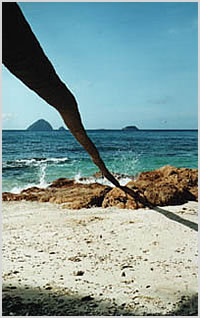

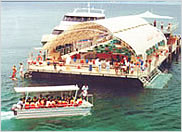 Although there are several dive operators on Langkawi most of the diving is done further south at Pulau Payar. There are four islands in this marine park some 30 kilometers south of Langkawi
Although there are several dive operators on Langkawi most of the diving is done further south at Pulau Payar. There are four islands in this marine park some 30 kilometers south of Langkawi
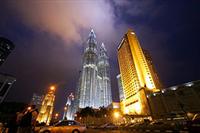
 The vast land is also the cradle of several great rivers such as the
The vast land is also the cradle of several great rivers such as the  In Tibet, five mountains exceed the altitudes of 8,000 meters (26,240 feet) and many of the mountains exceed the altitudes of 7,000 meters (22,960 feet). Hence, southwestern Tibet has been a popular destination for mountaineers.
In Tibet, five mountains exceed the altitudes of 8,000 meters (26,240 feet) and many of the mountains exceed the altitudes of 7,000 meters (22,960 feet). Hence, southwestern Tibet has been a popular destination for mountaineers.